

Most of us give our lawns a final mow during October or November and then leave our gardens to fend for themselves over the bitter winter months. But Lincolnshire garden designer Julian Gardner of Gardner Designs says spending a little longer preparing your outside space for the colder weather will help it to look its best come spring, while clever planting will ensure you have a green garden to enjoy throughout the year. Don't miss our month by month garden calendar for more tips.
1. Tidy paths and paving
Clear up all the leaves and debris once the trees are bare (it’s much easier while everything is still crisp and dry). It’s also worth giving your paving a thorough clean with a stiff brush and some soapy water before the frost arrives so it will be less slippery and safer during the wet winter months. Alternatively, if you have one, just give it a blast with a pressure washer.
2. Maintain borders
Cut back the herbaceous perennials in your borders close to the ground as they begin to die down and remove annuals that have finished their show. It’s also well worth generally tidying up your borders by removing any dead foliage, leaves and weeds.
Clip lawn edges and clear spent stems from perennials, but save anything with attractive seed heads – these look magical when frosted. Similarly, don’t cut back deciduous grasses; leave these until late February, as the dead foliage also helps protect the plant’s crown.
Now is the time to empty out your compost bins of old, well-rotted material and spread all over the fresh soil to set it up for the spring and make it look presentable during the bare winter months. Your compost bins can then be filled up again with this year’s waste ready to become next year’s bounty. Just be sure to dispose of your weeds separately.
Design-wise, narrow strips allow little space for plants, and thin borders tight to boundaries are somewhat unimaginative. Be generous; using an edging iron, make borders bigger.
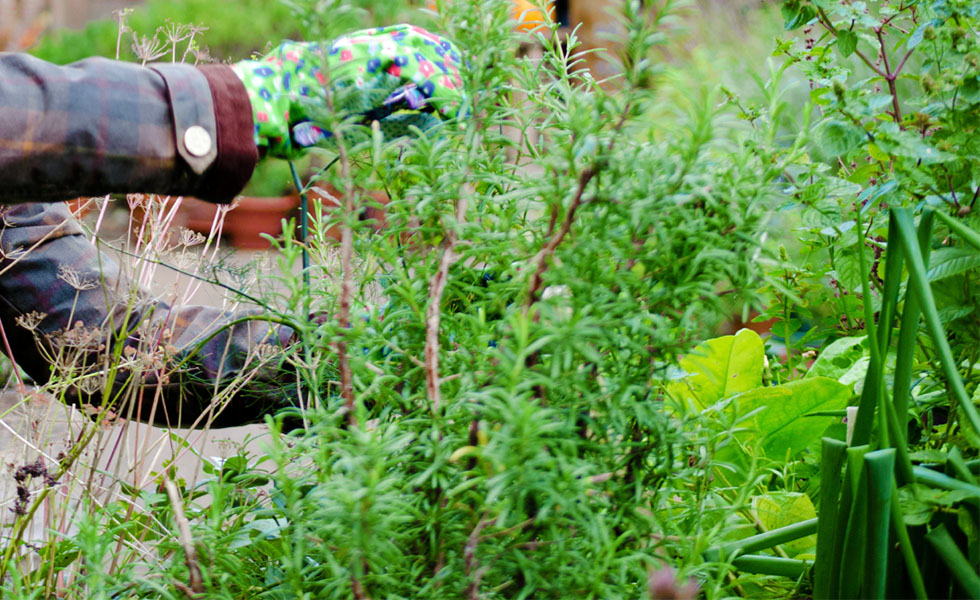
3. Pay attention to shrubs and trees
Prune any wayward branches on your structural shrubs to improve the overall shape and, if they need it, give your hedges a final trim before the frosts hit. Remove any dead, diseased or damaged branches, particularly with your trees, to prevent the stems from rubbing together and creating wounds or deformities.
Join our newsletter
Get small space home decor ideas, celeb inspiration, DIY tips and more, straight to your inbox!
To add some winter interest to your garden, look for trees and shrubs with brilliantly coloured bark. They are at their best now, and ideal in smaller gardens, where two or more seasons of interest are desirable. The Burgundy Tibetan cherry (Prunus serrulata), chalk-white paper birch (Betula papyrifera), striped snakebark maples, and the cinnamon paperbark maple (Acer griseum) are favourites. Shrubby dogwoods are striking, too, and come in flame-orange, scarlet and yellow.
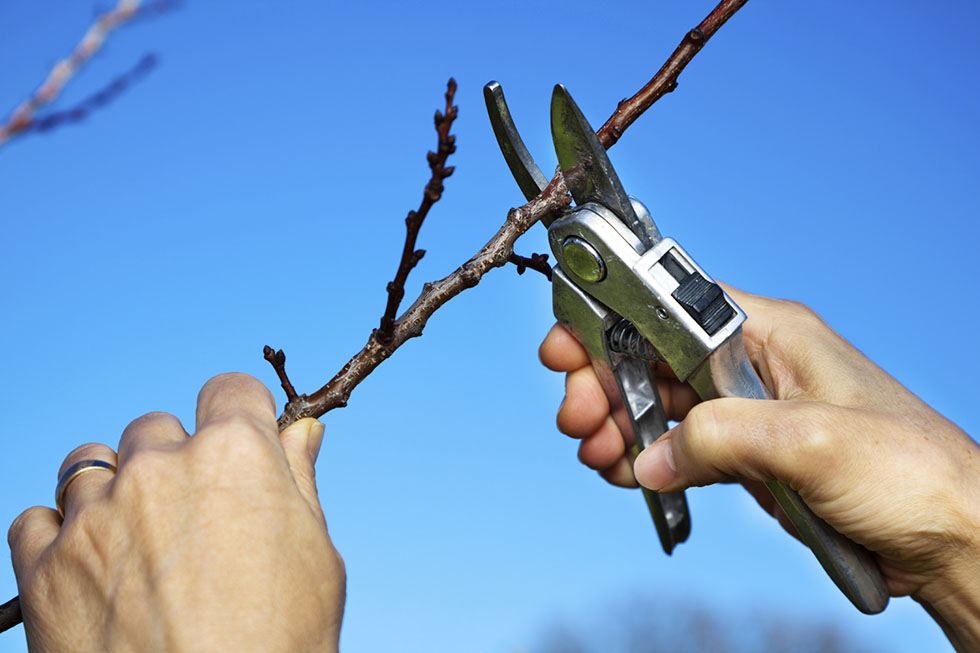
4. Repair garden structures
Once your borders and structural shrubs and trees have been cut back, it’s a good opportunity to gain easy access to carry out any maintenance work that may be required on your summerhouse, greenhouse or fencing. Keep a particular eye out for any decaying timber or pest infestations and treat or replace accordingly.
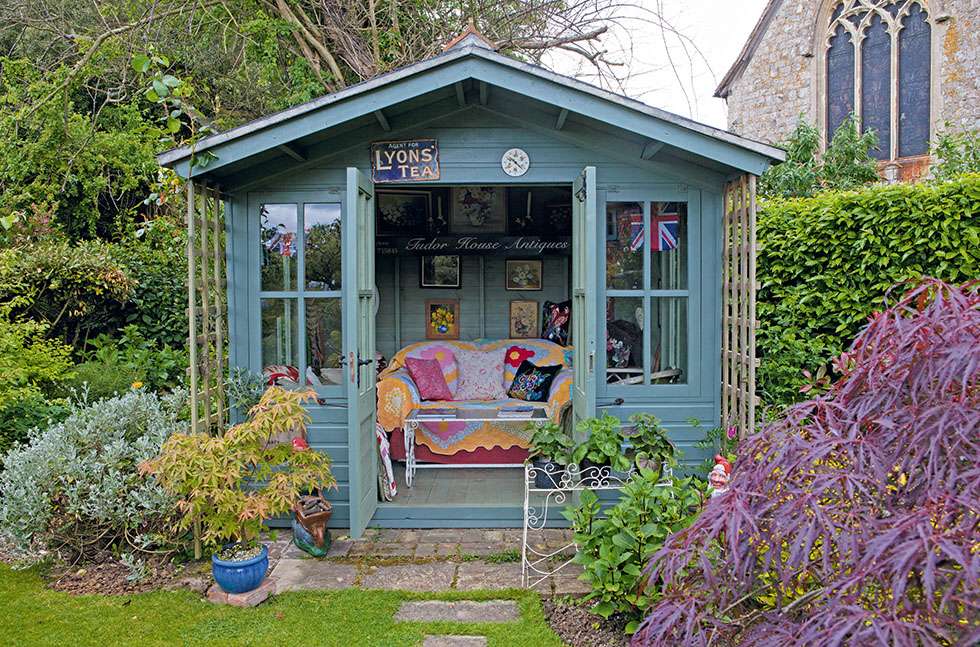
5. Protect plants
Move any pots planted with tender species like Cannas, Agapanthus or palms, into a conservatory or greenhouse for winter protection. Wrap horticultural fleece around the trunks of any palm trees planted in the ground and spread a thick mulch of bark around the base of these and any other delicate trees, like Japanese maples, to protect them from the frost.
Small deciduous trees, shrubs and roses can be lifted bare-root and replanted before mid-March. Everything else, especially evergreens and conifers, needs rootballing. For detailed advice and step-by-step instructions on this, search for ‘moving plants’ on the RHS website.
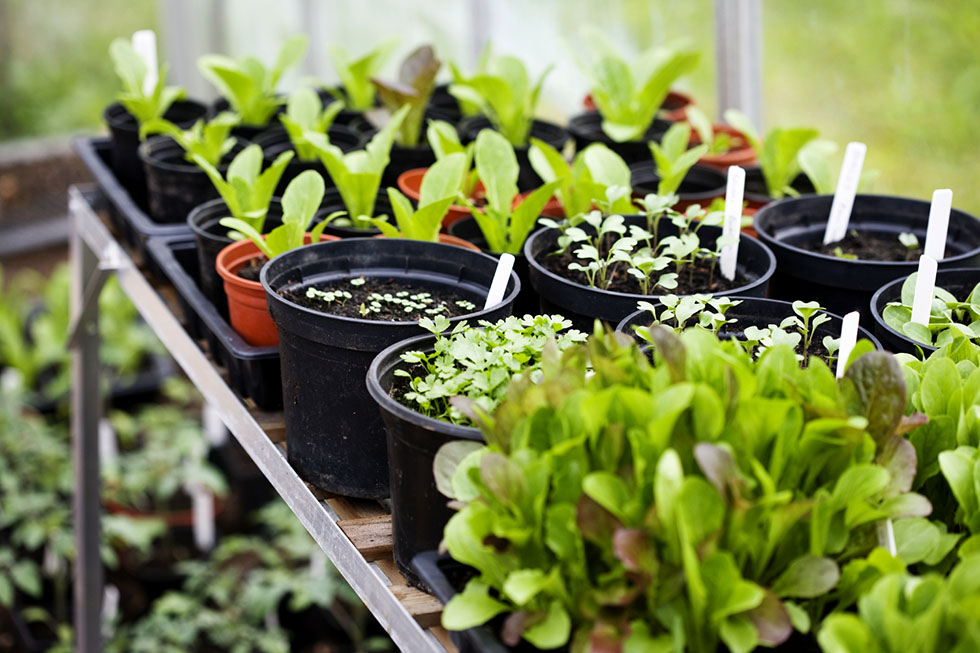
6. Tidy ponds and water features
Try to prevent your pond or water feature clogging up with leaves by temporarily covering in a net during ‘the fall’. If your pond hasn’t been cleaned in a number of years and is beginning to look murky, then late autumn is the ideal time to tackle it while many creatures are becoming dormant. If there are fish in your pond, then try to be vigilant during frosts to ensure that the water’s surface doesn’t completely freeze over, even if you just have a ball on standby to float on the water’s surface it will help.
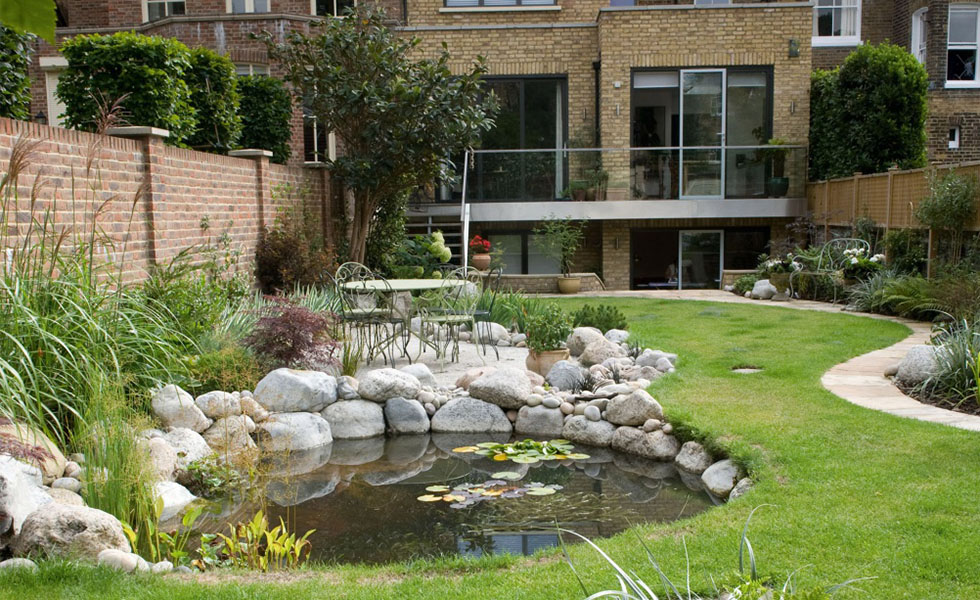
7. Prepare the lawn
Go over your entire lawn with a scarifying or springtine rake to remove thatch and moss to allow it to breathe and grow more freely. If you do have a large amount of moss invading your green space, then there’s a good chance that you have drainage issues – a session with a lawn spike aerator or even just a standard garden fork across the area will help considerably. Combine with specially produced autumn lawn feed and moss killer products to give your lawn all the help you can.
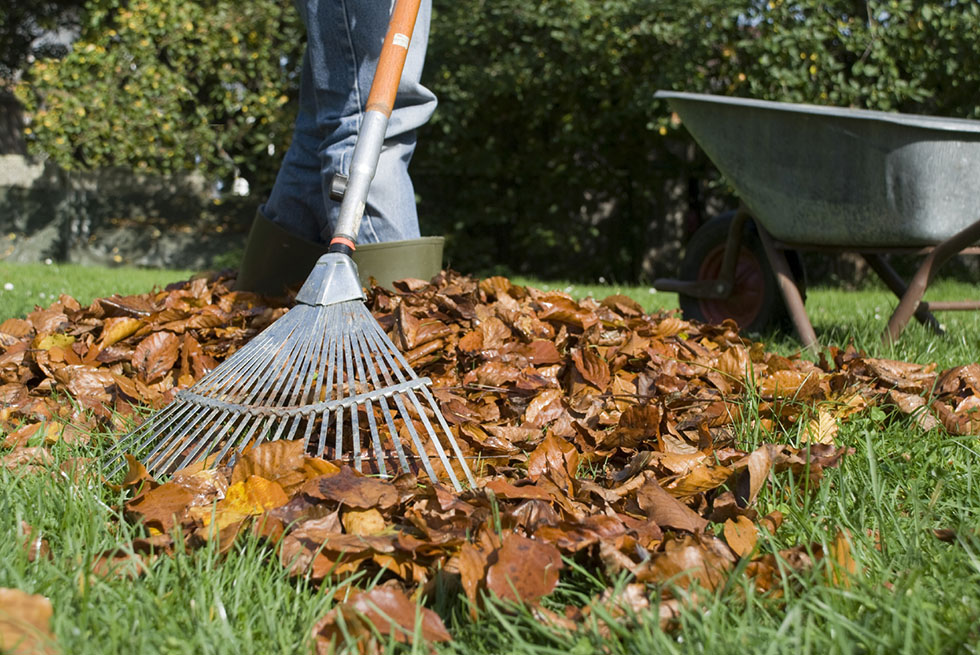
8. Plant out spring-flowering bulbs
Plant out your spring bulbs before the winter kicks in. From snowdrops to crocus and daffodils, they all like well-fertilised, free-draining soil, so dig in lots of sharp sand and some bone meal for a slow release of nutrients that will feed the bulbs over a long period. When planting bulbs, the general rule of thumb is to plant at two or three times the depth of the bulb itself. Spacing also works well at two or three times the width of the bulb, and for the most natural and dramatic effect, plant the same variety of bulb in large drifts.

9. Watch out for snow
It cannot be overstated how devastating heavy and prolonged periods of snow and ice can be to the trees and plants in your garden. If you simply knock off the snow resting on the leaves and branches of your prized specimens while it’s still soft and fresh there is a good chance that you will be preventing severe damage and possible fatalities – so it’s worth staying on alert when the white stuff arrives.
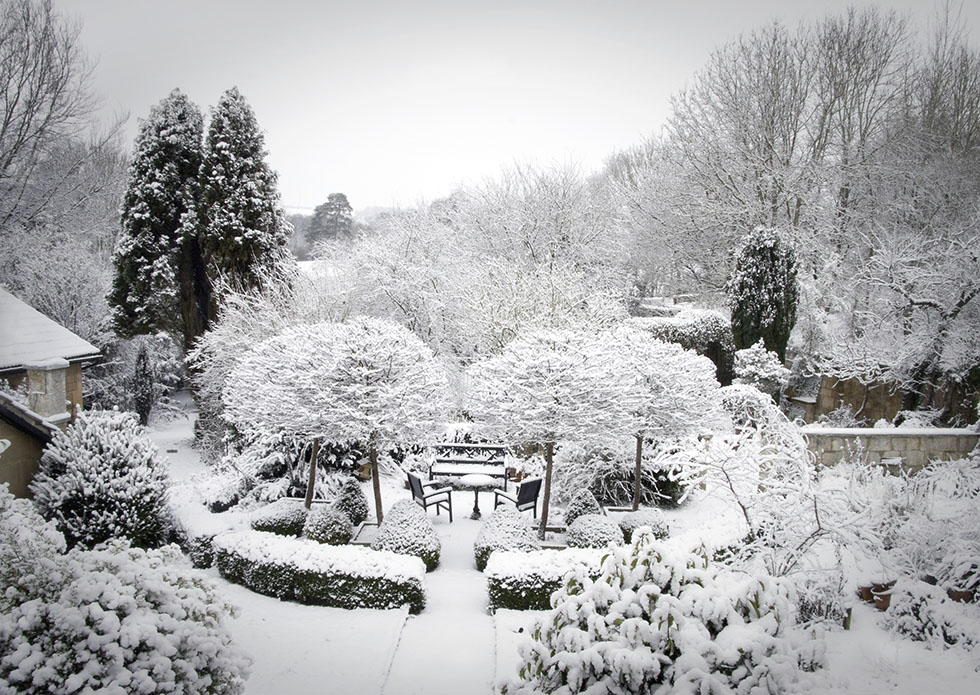
10. Indulge in winter greenery and colour
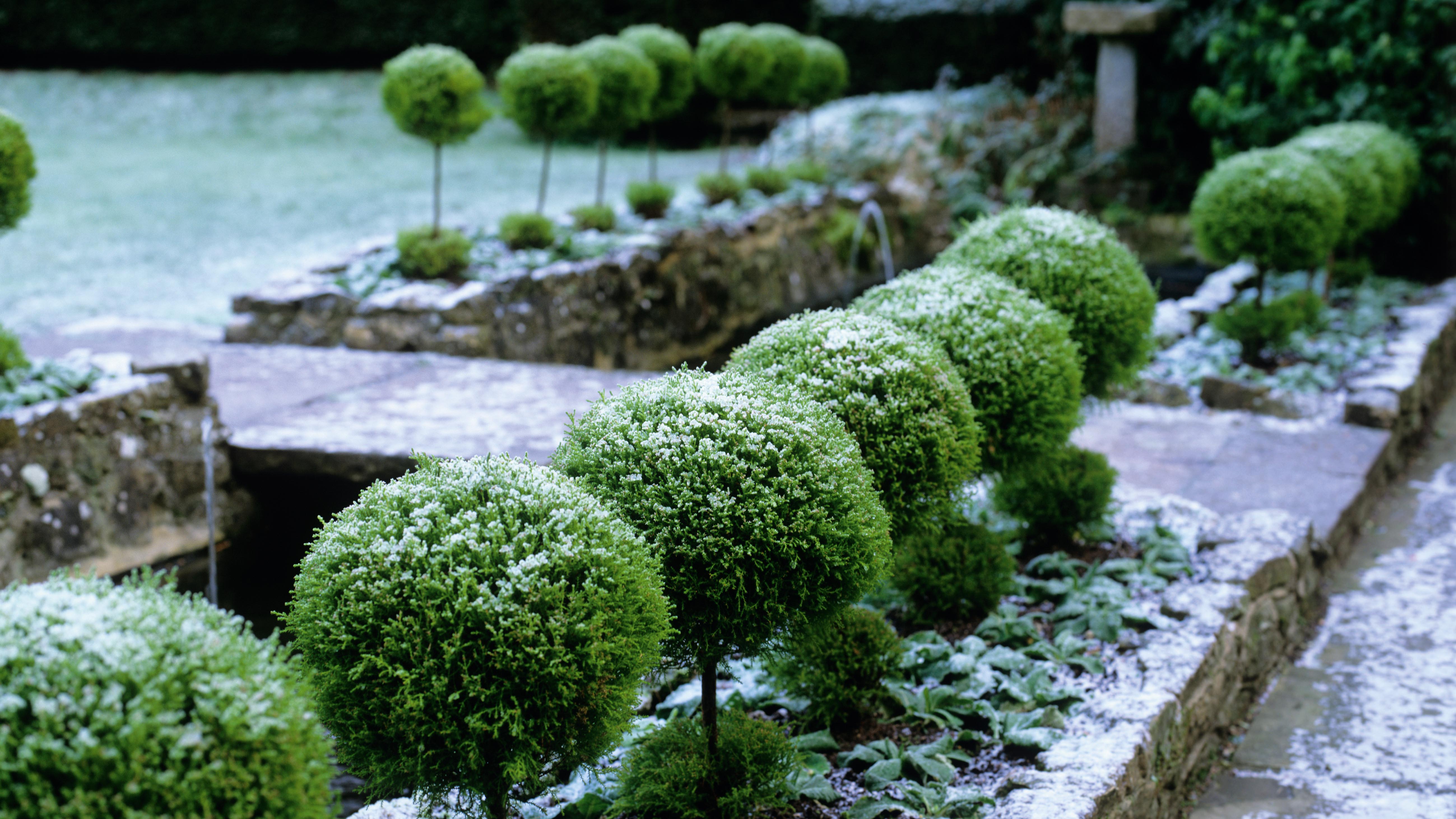
Just because the winter is a time of dormancy for many living things, doesn’t mean that your garden can’t still be interesting and exciting. Incorporate architectural evergreen shrubs like the Phormium tenax to add crucial structure alongside deciduous shrubs like the Cornus sanguine ‘Midwinter Fire’ to set the winter border alight with it’s gorgeous flame-coloured stems. Find out how to plan a winter garden.
Fill containers with winter pansies, polyanthus and violas, one species per pot. For more creative displays, partner them with evergreen grasses, perennials, small shrubs and bulbs.
11. Act on any privacy issues that become apparent
If gaps in boundaries begin to show in winter, then trees, particularly evergreens, tall-but-thin shrubs and bamboo, hedges and pleached trees (hedges on ‘stilts’) are useful, but they’re not immediate solutions – unless you buy large plants. For instant impact, choose woven hazel or willow screens, tight-knit trelliswork or wooden louvres, all of which will let in light. Be mindful of height restrictions: in back gardens it’s two metres, and at the front of the house one metre (unless local covenants apply). Anything higher will need planning permission. With these limits in mind it’s a good idea to create private areas or ‘rooms’ within your garden, where you are free to plant taller trees and shrubs as you choose.
Find out more about improving privacy in your garden
12. Install outdoor lighting to add another dimension
Outdoor lighting is a must for cheering up your garden in winter. Sunlight doesn’t discriminate, but in the night garden you can focus attention on sculptural elements, trees and topiary. Spotlights are the most versatile fittings and can be positioned at different angles for varying effects. Use a powerful torch to experiment.
13. Make a to-do list
The garden is relatively quiet in winter, in terms of day-to-day tasks, so it is the ideal time to tackle any garden jobs that you may have put off doing. Experienced gardeners also know that, even though the growing season has finished, there’s always work to do and spring isn’t that far off. Anything done now will lessen the load later on.
For new garden design ideas, put your ideas down on paper, ideally to scale, before you invest in anything new. Whether you are creating a new bed entirely or just giving a facelift to existing borders, it’s always best to design the area first before undertaking the work.
More gardening know how:
Laura Crombie is a journalist and TV presenter. She has written about homes and interiors for the last 17 years and was Editor of Real Homes before taking on her current position as Content Director for Country Homes & Interiors, 25 Beautiful Homes Period Living and Style at Home. She's an experienced home renovator and is currently DIY-renovating a 1960s house in Worcestershire. She's been quoted on home design and renovating in The Times, The Guardian, The Metro and more. She's also a TV presenter for QVC and has been a commentator for Channel 4 at Crufts dog show.
-
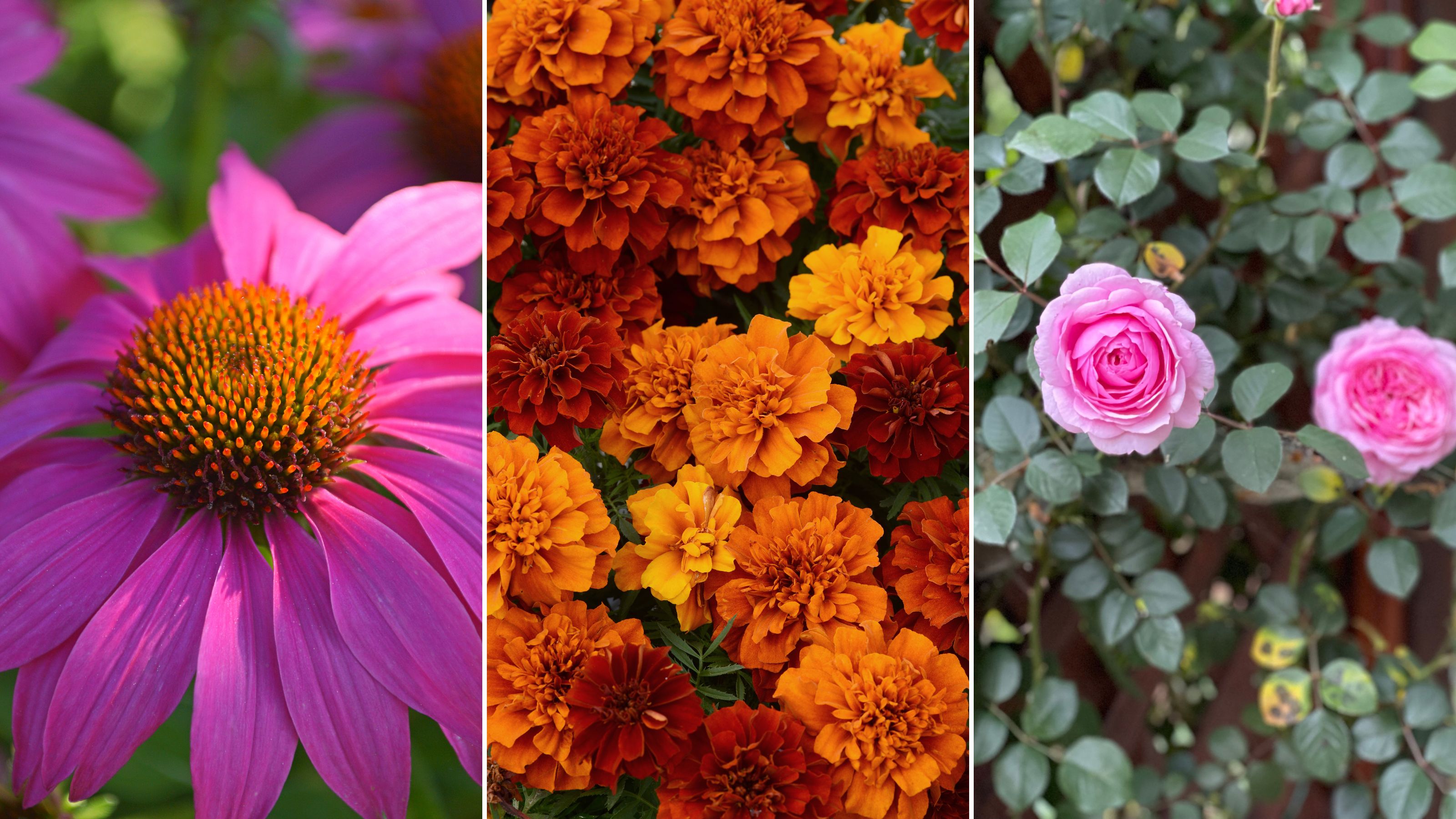 The 7 flowers to plant in August, according to gardening gurus
The 7 flowers to plant in August, according to gardening gurusKnowing what flowers to plant in August isn't always so clear-cut. But that's why we called in help from pro planters — here's what they said to pot.
By Becks Shepherd Published
-
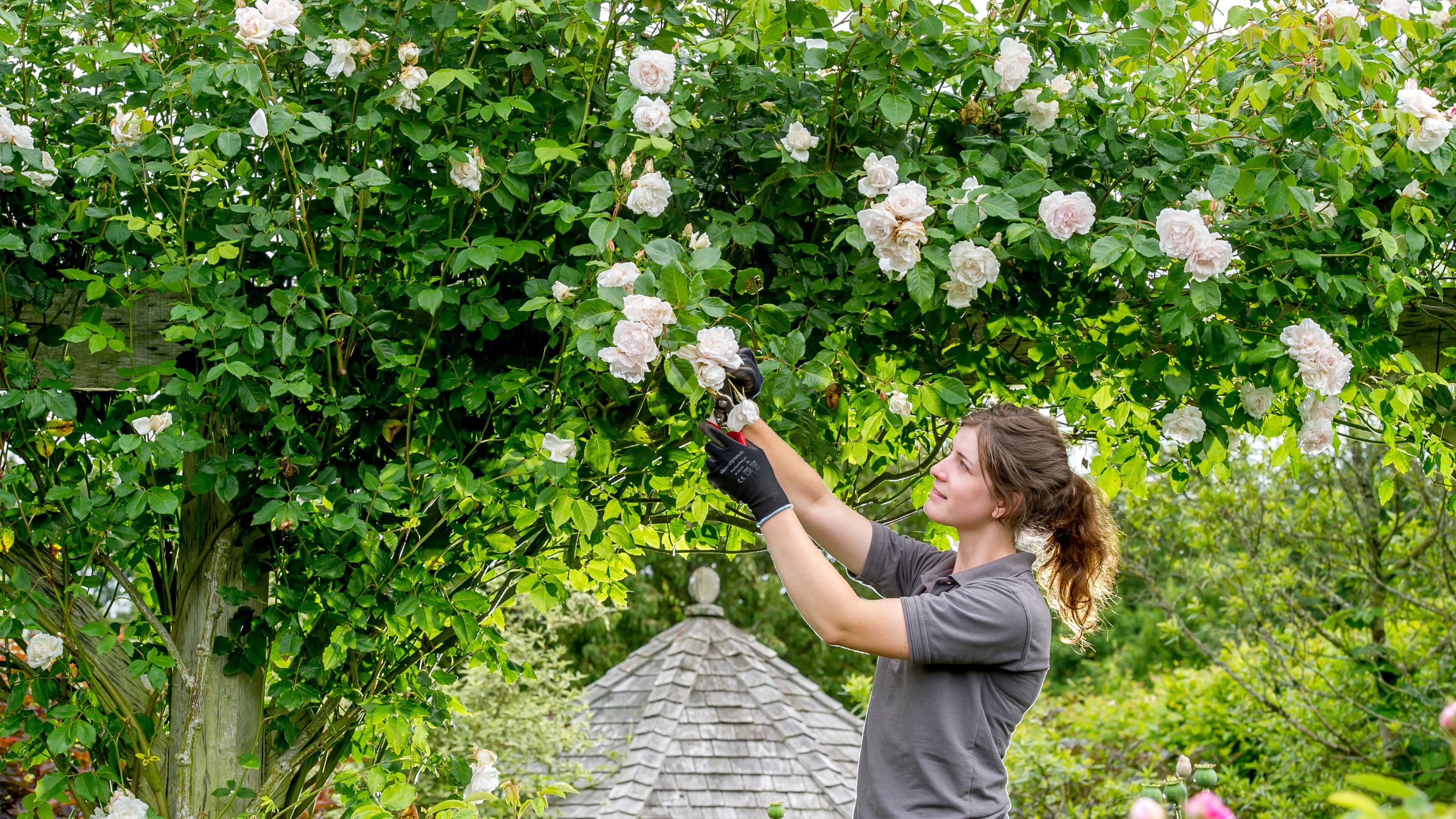 The 7 plants to prune in August — and the 2 pieces of greenery you shouldn't touch
The 7 plants to prune in August — and the 2 pieces of greenery you shouldn't touchWondering what plants to prune in August? We asked a gardening expert for their top tips plus info on what pieces of greenery to avoid pruning this month
By Becks Shepherd Published
-
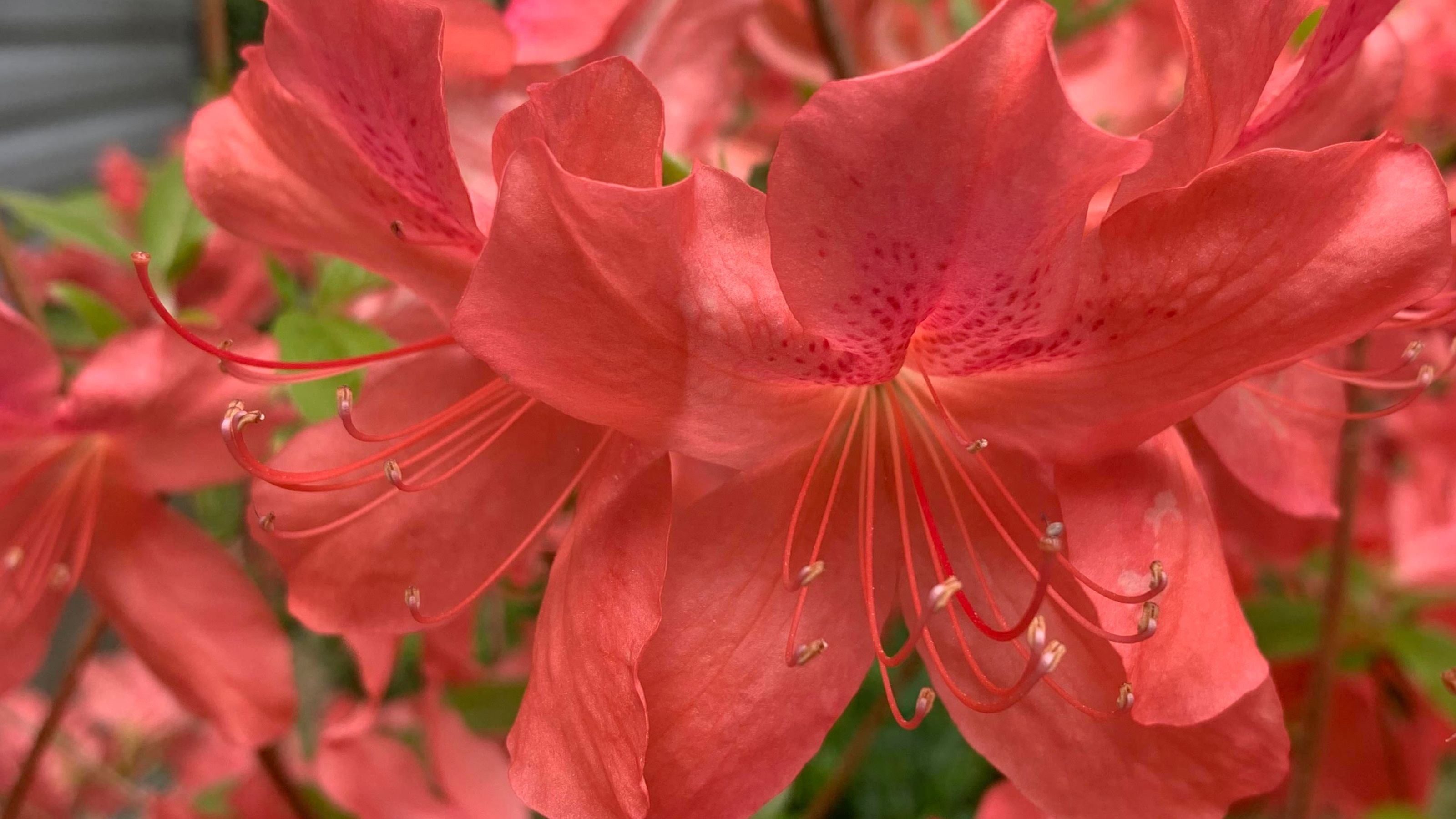 Do you need to deadhead azaleas? Top tips for pruning these flowering shrubs
Do you need to deadhead azaleas? Top tips for pruning these flowering shrubsWondering whether you need to deadhead azaleas? We asked a gardening expert for their top tips for looking after these blooms
By Becks Shepherd Published
-
 10 houseplants that are not toxic to cats — plus expert advice on keeping your pets safe
10 houseplants that are not toxic to cats — plus expert advice on keeping your pets safeKeep your four-legged companion safe by choosing these houseplants that are not toxic to cats, and learning the dangers of those that are, according to veterinary experts
By Holly Crossley Published
-
 Which houseplants are toxic to dogs? Vet experts pinpoint problem plants and solutions
Which houseplants are toxic to dogs? Vet experts pinpoint problem plants and solutionsWondering Which houseplants are toxic to dogs? We spoke to vets about the problematic leafy greens, what they trigger in dogs, and how to find a solution
By Danielle Valente Published
-
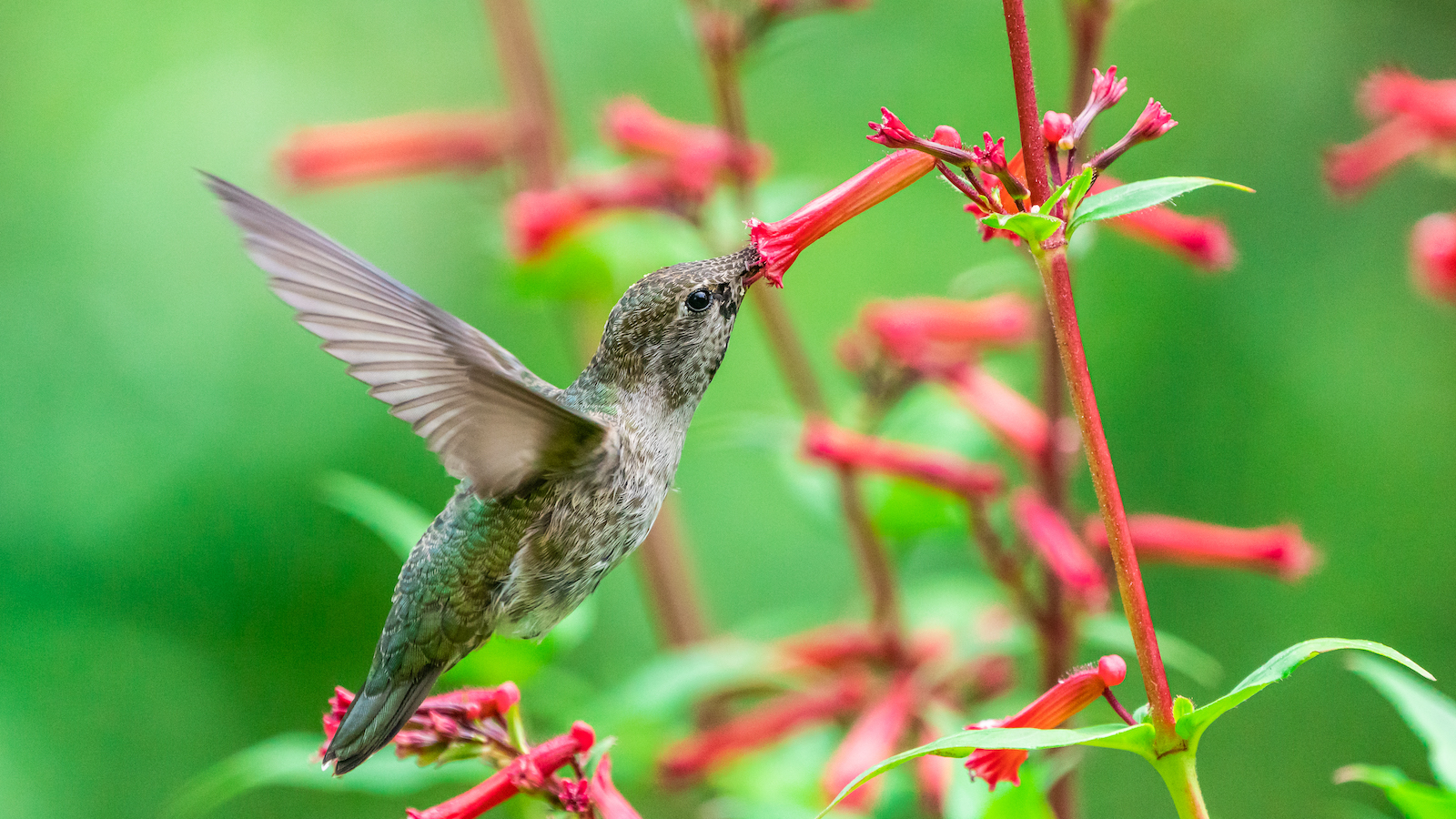 How to attract hummingbirds to your backyard, according to ornithologists
How to attract hummingbirds to your backyard, according to ornithologistsTrying to figure out How to attract hummingbirds to your backyard? These ornithologist-backed tips will guarantee you visitors in no time
By Danielle Valente Published
-
 Does hydrangea bloom every year? Pros spill the dirt on the "garden favorite" and when to expect it
Does hydrangea bloom every year? Pros spill the dirt on the "garden favorite" and when to expect itWondering, "Does hydrangea bloom every year"? We asked the pros all about the garden favorite and how often to expect them — here's the dirt.
By Danielle Valente Published
-
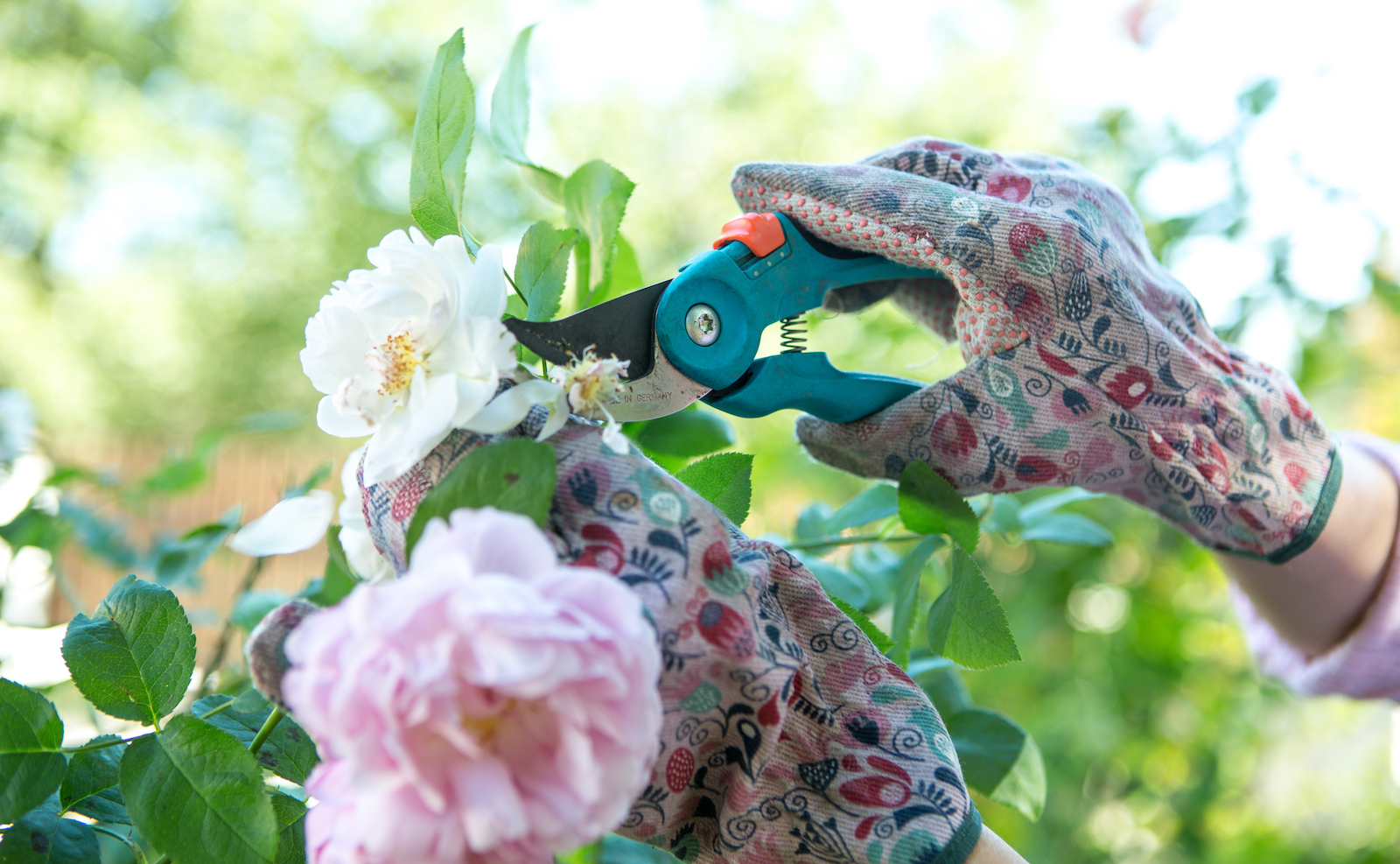 What to prune in spring — experts reveal how to get a lush, full garden
What to prune in spring — experts reveal how to get a lush, full gardenCurious what to prune in spring? We asked gardening experts for their top tips for a luscious, thriving garden
By Danielle Valente Published